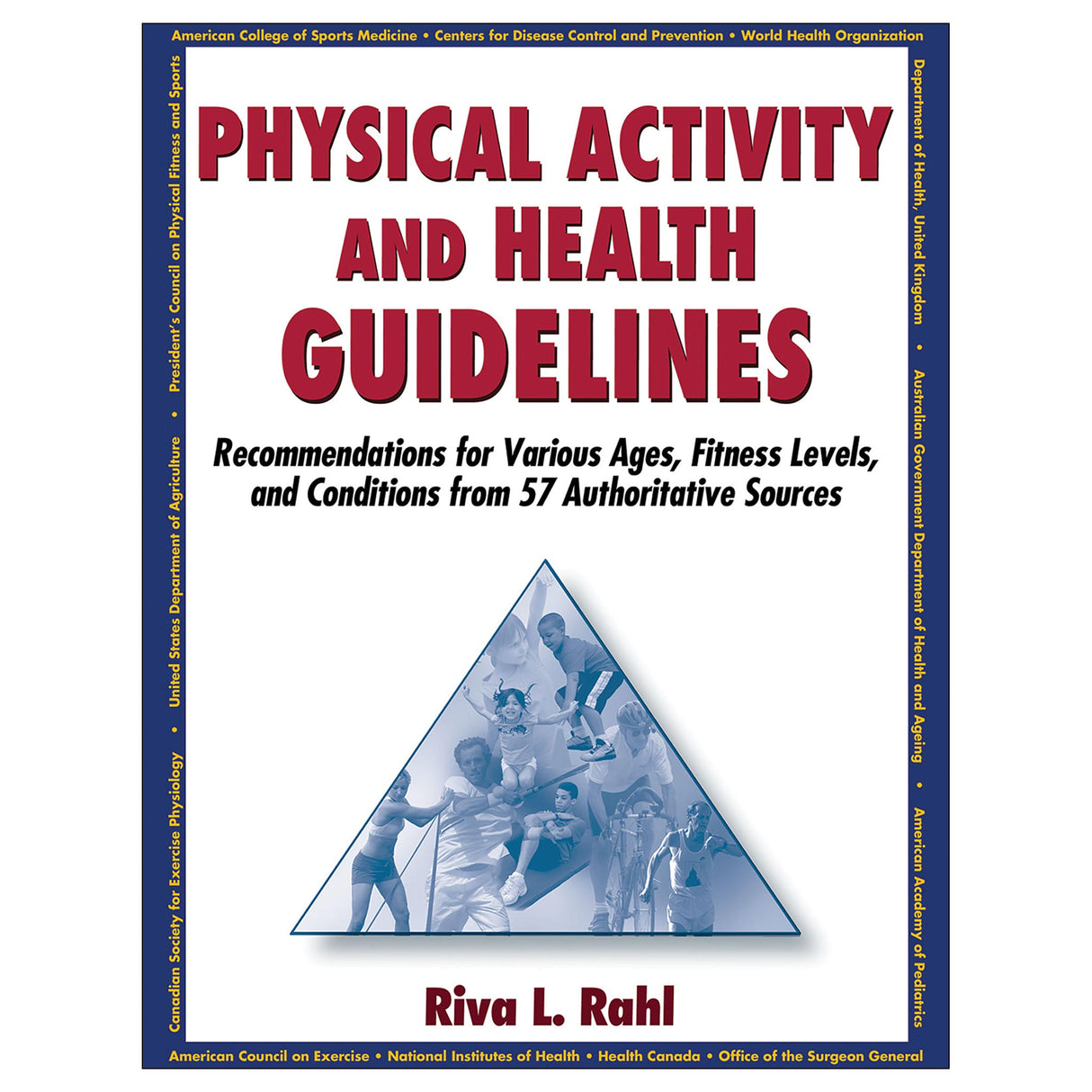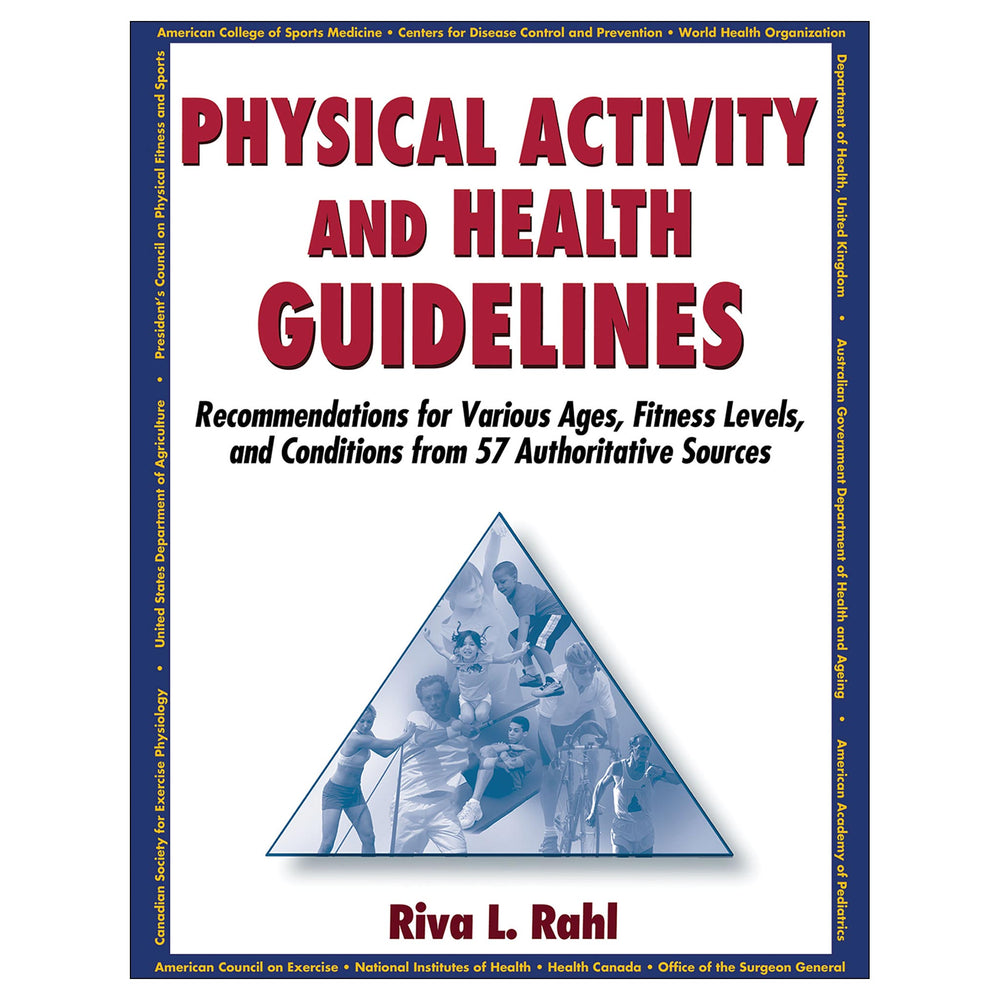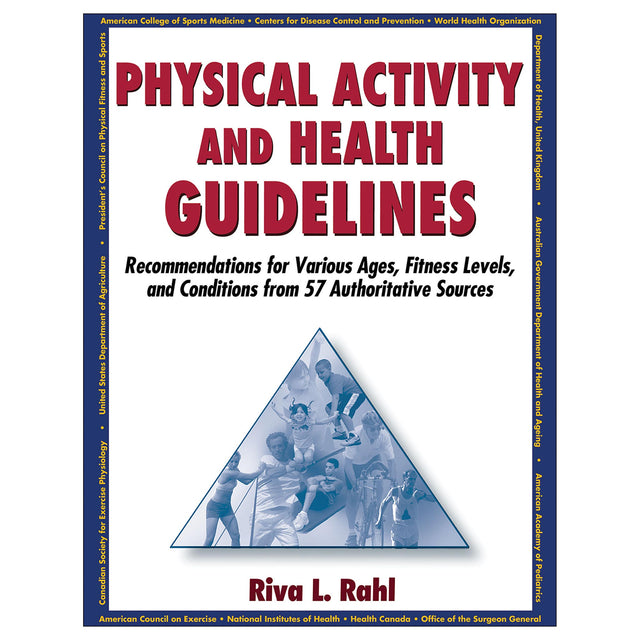Physical Activity and Health Guidelines PDF
Recommendations for Various Ages, Fitness Levels, and Conditions from 57 Authoritative Sources
Author: Riva Rahl
$47.00 USD
Access Duration: 10 Years
Sifting through the numerous guidelines on physical activity and health published by government agencies, professional organizations, and associations can be a daunting task. Information exists in all types of formats and locations—including government documents, press releases, and Web sites—so simply finding those guidelines can be an ordeal. PhysicalActivity and Health Guidelines puts the current information in one place—at your fingertips.
Physical Activity and Health Guidelines compiles the latest recommendations from various leading sources and organizations into a single text. This one-of-kind resource provides quick reference to physical activity and health recommendations for healthy people and for those with chronic conditions across all age groups. All readers—physicians, physical therapists, fitness professionals, and general fitness enthusiasts—will be able to locate individualized recommendations regarding appropriate levels and types of physical activity.
Specific activity recommendations for people with diabetes, asthma, osteoarthritis, and cerebral palsy are detailed in this text. Other guidelines for the prevention of common chronic diseases such as cancer, coronary artery disease, osteoporosis, and metabolic syndrome are also shared.
This text also includes the following information:
• The components of exercise program design, which will assist readers in preparing to implement individual and group exercise programs
• How physical activity recommendations can help people meet weight-management guidelines
• Information on purchasing and using exercise equipment such as treadmills, heart rate monitors, weight training machines, and exercise videos
• Guidelines for cardiac testing and other exercise testing to assist in the implementation and evaluation of physical activity programs as well as the assessment of the safety of these programs for people with chronic conditions
For ease of use, Physical Activity and Health Guidelines presents information in a consistent format for each entry, including the date issued or most recently updated, the issuing organization, appropriate population, and location of the guidelines (with Web sites when available). Recommendations are given for aerobic, resistance, and flexibility training; further specifications regarding the frequency, intensity, duration, and type of activity are included. An appendix lists additional resources divided by topic and includes Web addresses of key organizations, statements, and other physical activity and health-related tools.
Physical Activity and Health Guidelines is the first text to gather the wealth of information regarding physical activity, exercise, and health needs and recommendations into a single source. Convenient and easy to use, this unique text will help readers understand the requirements for safe and effective physical activity for all people regardless of health conditions, and it offers the basic knowledge and tools for designing and implementing appropriate physical activity programs.
Part I: General Health and Fitness Guidelines
Chapter 1: Exploring the Relationship Between Physical Activity and Health
History and Development of Physical Activity Guidelines
Basic Concepts and Definitions
Changes and Benefits Resulting From Physical Activity
Risks of Physical Activity
Patterns in Physical Activity Participation
Summary
Chapter 2: Exercise Guidelines for Physical Fitness and Health
Most Recent National Guidelines in the United States
Significant Historical Guidelines
Specialized Guidelines
State and International Guidelines
Summary
Chapter 3: Guidelines for Personal Exercise Programs
Basic Definitions and the FITT Principle
Components of Physical Fitness
Guidelines for Individualized Exercise Prescription
Summary
Part II: Physical Activity Guidelines by Population
Chapter 4: Infants and Toddlers
Guidelines From the American Academy of Pediatrics
Guidelines From Other Organizations
Guidelines for Prevention of Obesity and Chronic Disease
Physical Activity as Play and Nutritional Goals for Children
Summary
Chapter 5: School-Aged Children
Basic Facts About Physical Activity and Health in Children
Establishment of the Earliest Guidelines for Children
Landmark Guidelines
School and Community Health Guidelines
Guidelines Outside of the School Environment
International and State Guidelines
Guidelines Focused on Specific Health Goals
Summary
Chapter 6: Pregnant and Postpartum Women
Encouraging Pregnant Women to Be Physically Active
Benefits and Risks of Physical Activity for Pregnant Women
Primary Concerns of Exercise and Physical Activity During Pregnancy
Guidelines for General Exercise Prescription
Important National and International Guidelines
Benefits and Risks of Physical Activity During the Postpartum Period
Summary
Chapter 7: Older Adults
Benefits of Physical Activity for Older Adults
Major National Guidelines
Other National Guidelines
International and State Guidelines
Guidelines for Adults Who Are Frail or at Risk for Falling
Contraindications to Exercise
Summary
Part III: Physical Activity Guidelines by Disease States
Chapter 8: Cancer Prevention and Optimal Cardiometabolic Health
How Exercise Reduces the Risks of Cancer
General Cancer Prevention Guidelines
Guidelines for Specific Types of Cancer
Metabolic Syndrome
Type 2 Diabetes
Summary
Chapter 9: Cancer
Benefits of Physical Activity
American Cancer Society Guidelines
Other Notable Guidelines
Guidelines for Specific Cancers
Side Effects of Cancer Affecting Physical Activity
Summary
Chapter 10: Hypertension and Cardiovascular Disease
Benefits of Exercise for Hypertension
American College of Sports Medicine Guidelines
International Guidelines
Guidelines for Coronary Artery Disease
Summary
Chapter 11: Arthritis and Osteoporosis
Rheumatoid Arthritis
Osteoarthritis
General Arthritis Guidelines
Osteoarthritis Guidelines
Osteoporosis
Guidelines for Prevention of Osteoporosis
Guidelines for Individuals With Osteoporosis
Summary
Chapter 12: Diabetes
Benefits of Physical Activity for Preventing and Managing Diabetes
Potential Concerns Regarding Physical Activity
Guidelines for Individuals With Type 2 Diabetes
Guidelines for Individuals With Type 1 Diabetes
Summary
Chapter 13: Neuromuscular Disorders
Benefits of Physical Activity
General Recommendations From Physical Activity Guidelines for Americans
Guidelines for Cerebral Palsy
Guidelines for Parkinson’s Disease
Guidelines for Muscular Dystrophy
Guidelines for Multiple Sclerosis
Guidelines for Spinal Cord Injury and Disability
Guidelines for Stroke and Brain Injury
Summary
Chapter 14: Asthma
Exercise-Induced Asthma
General Guidelines for People With Asthma
Guidelines for Children With Asthma
Summary
Part IV: Guidelines for Exercise Testing and Prescription and Beyond
Chapter 15: Exercise Testing and Prescription
Standards for Exercise Testing in Adults
Benefits of Exercise Testing for Children
Summary
Chapter 16: Cardiac Exercise Testing and Prescription
Candidates for Testing Utility of Information Acquired From Exercise Testing
Protocols for Exercise Testing
Exercise Testing Procedures
Other Methods of Cardiac Testing
Summary
Chapter 17: Dietary and Weight Management Guidelines
Basic Facts About Body Weight
Dietary Guidelines From National Organizations
International Dietary Guidelines
Hydration, Energy, and Supplementation During Activity
Dietary Guidelines for Special Populations
Dietary Guidelines for Various Diseases
Summary
Chapter 18: Exercise Equipment and Facilities
Aerobic Exercise Machines
Weights
Tools for Monitoring Physical Activity
Exercising at Home
Exercising in a Workout Facility
Summary





